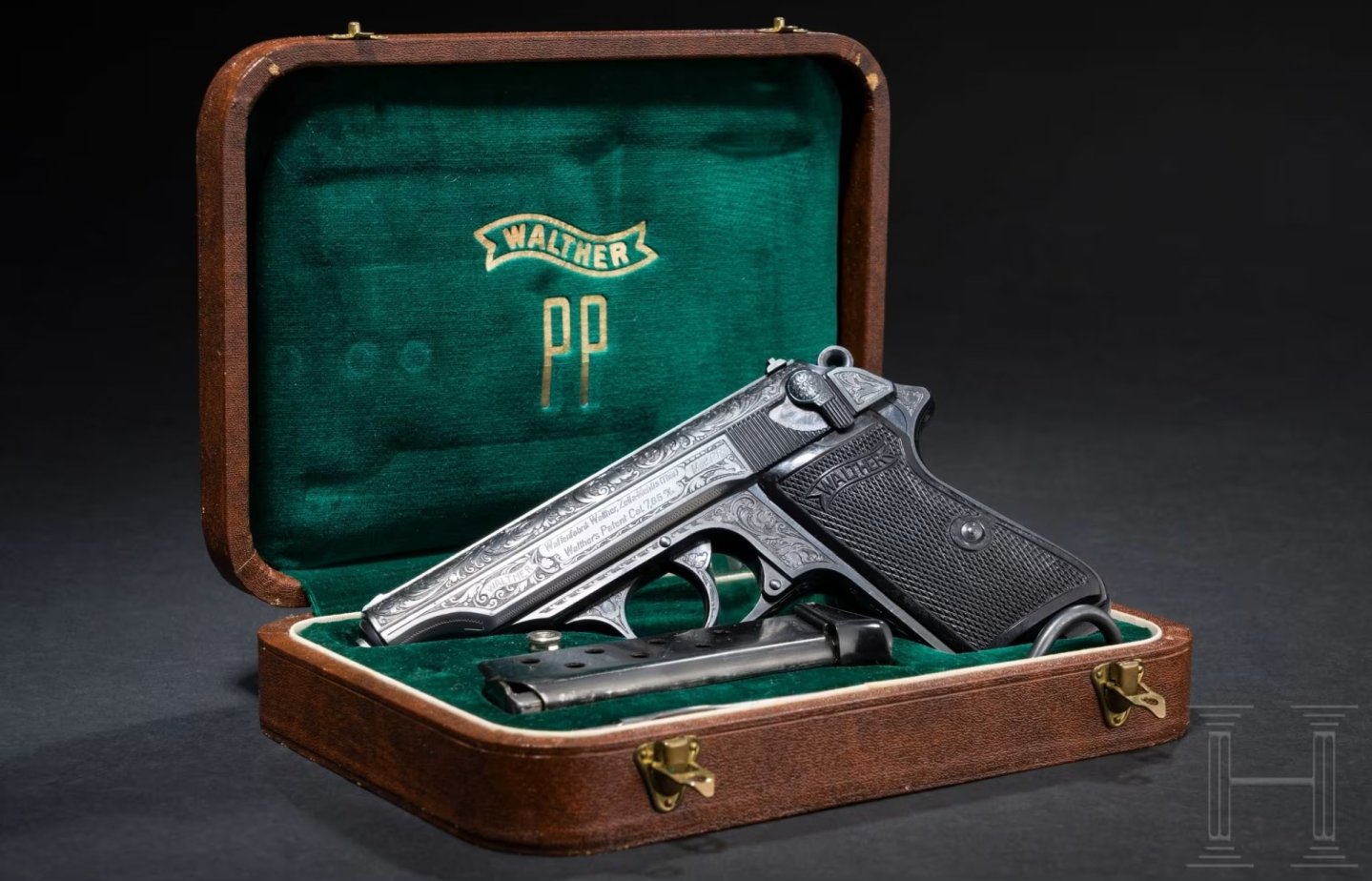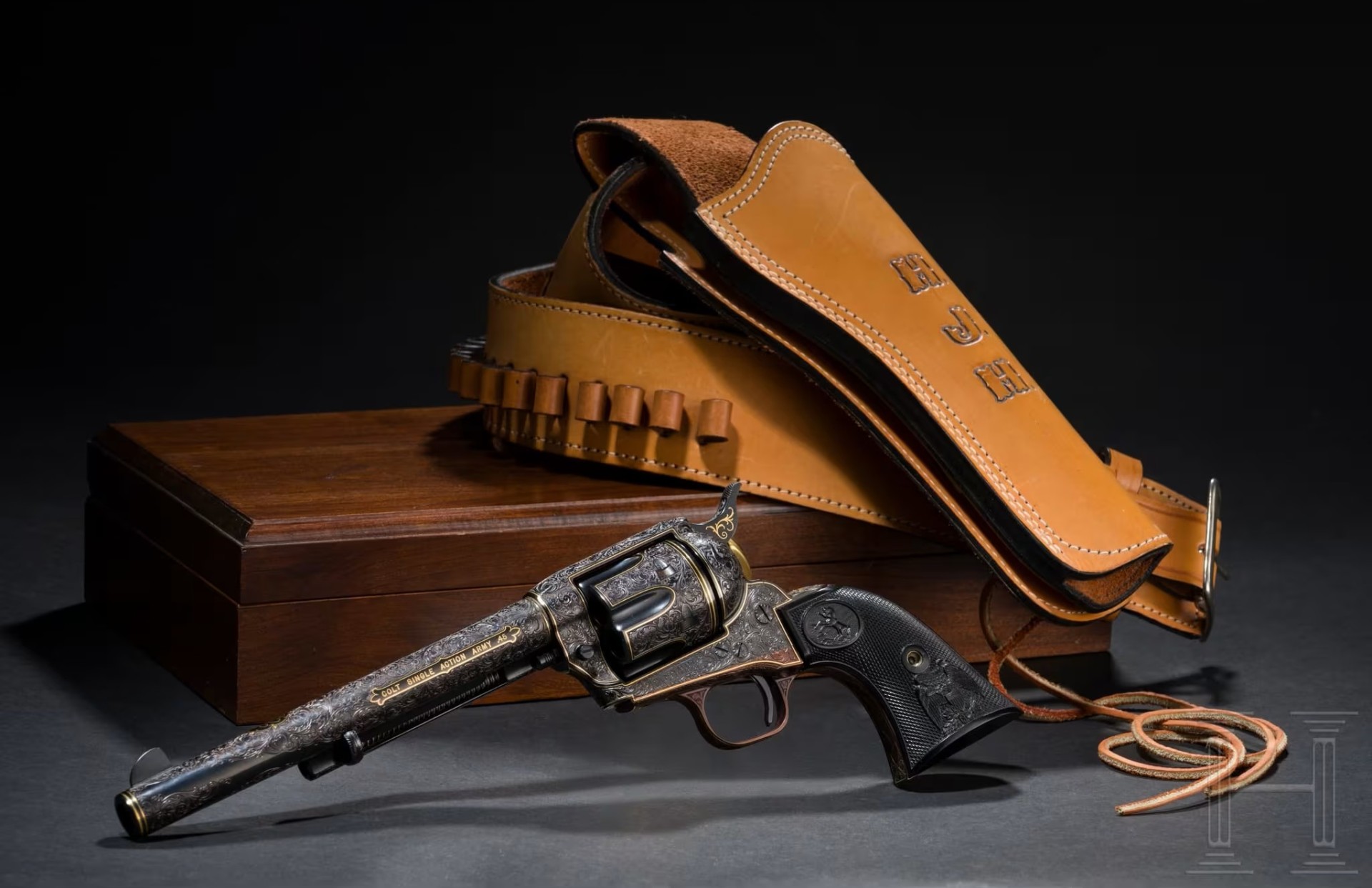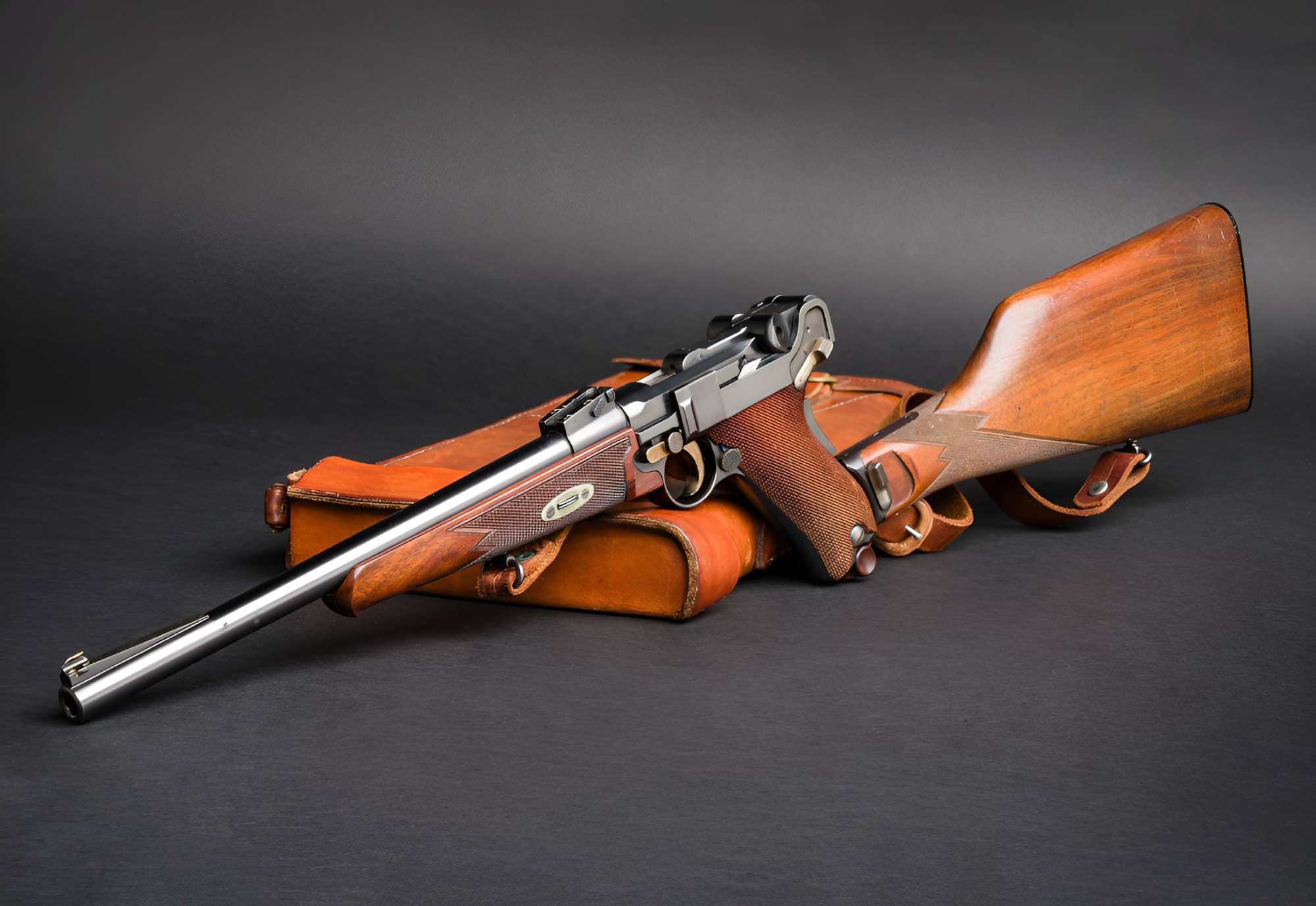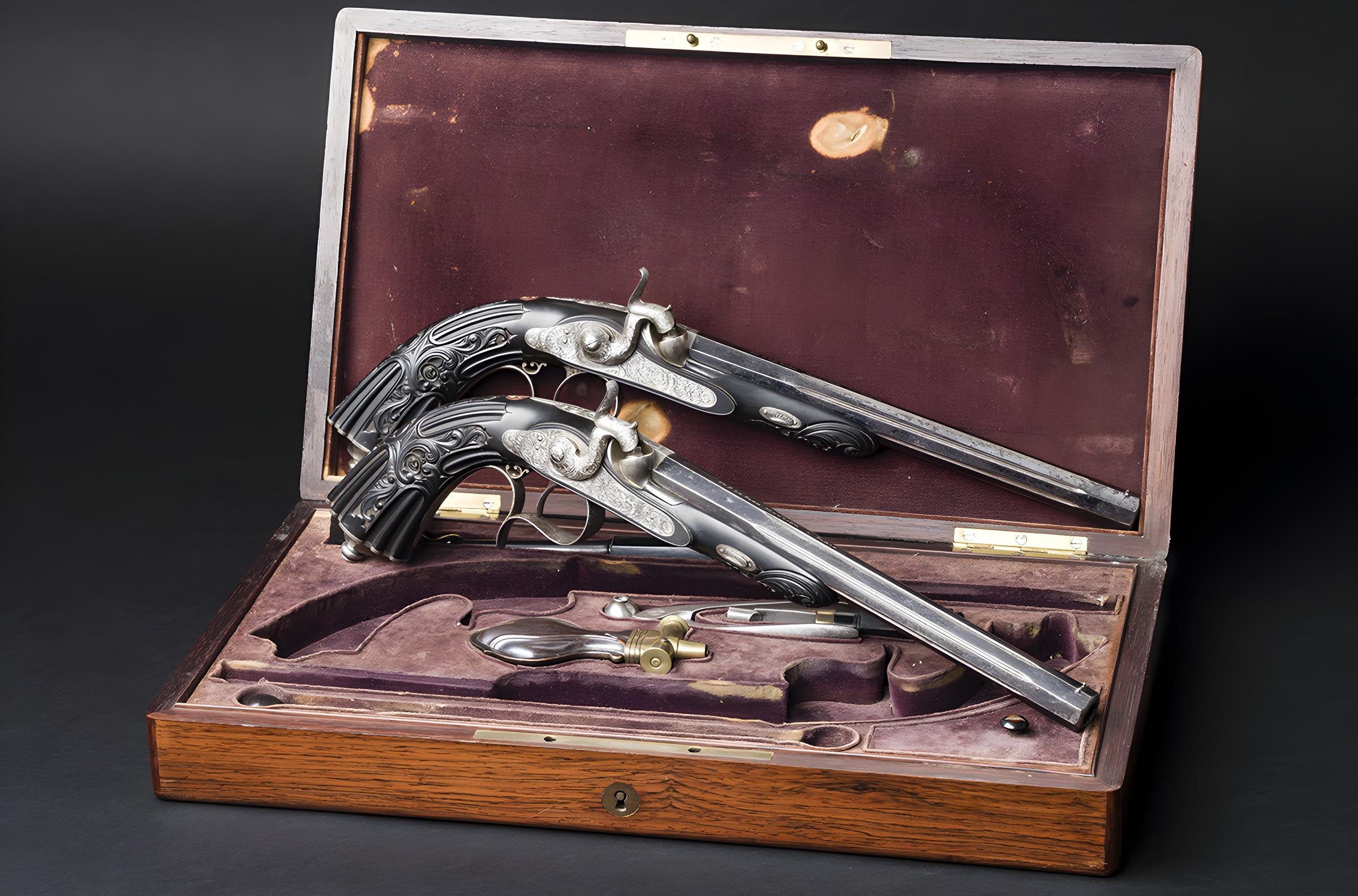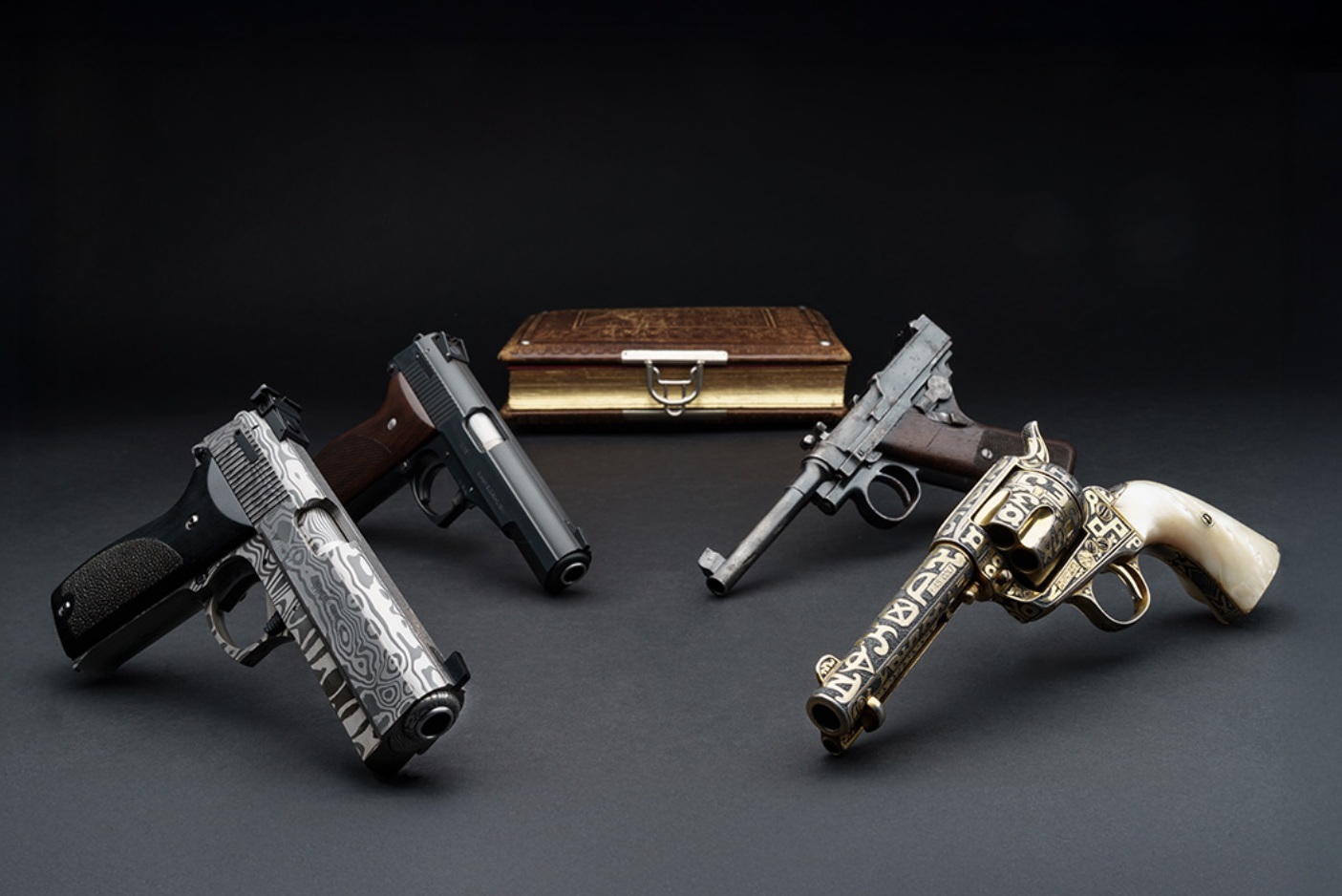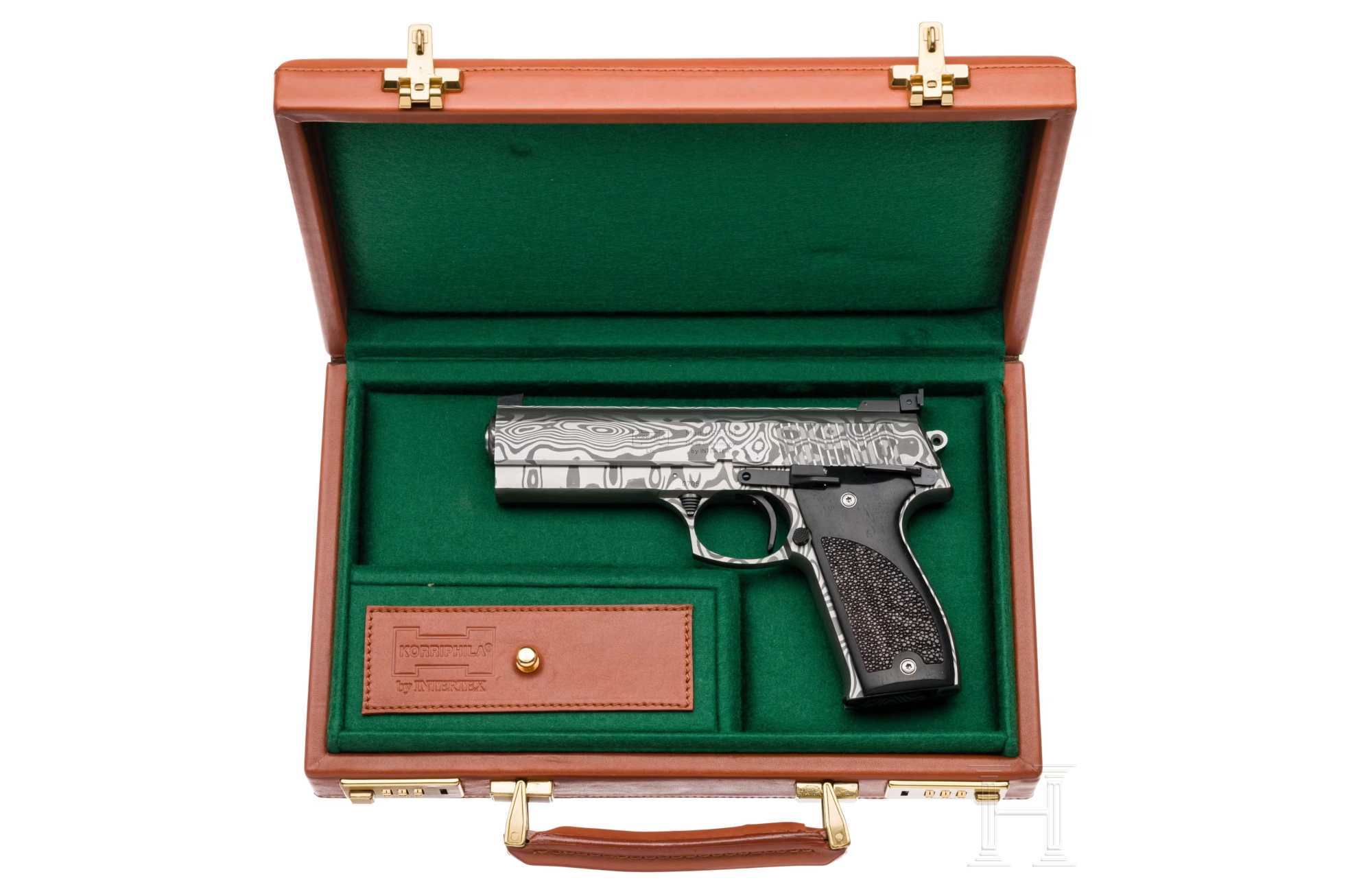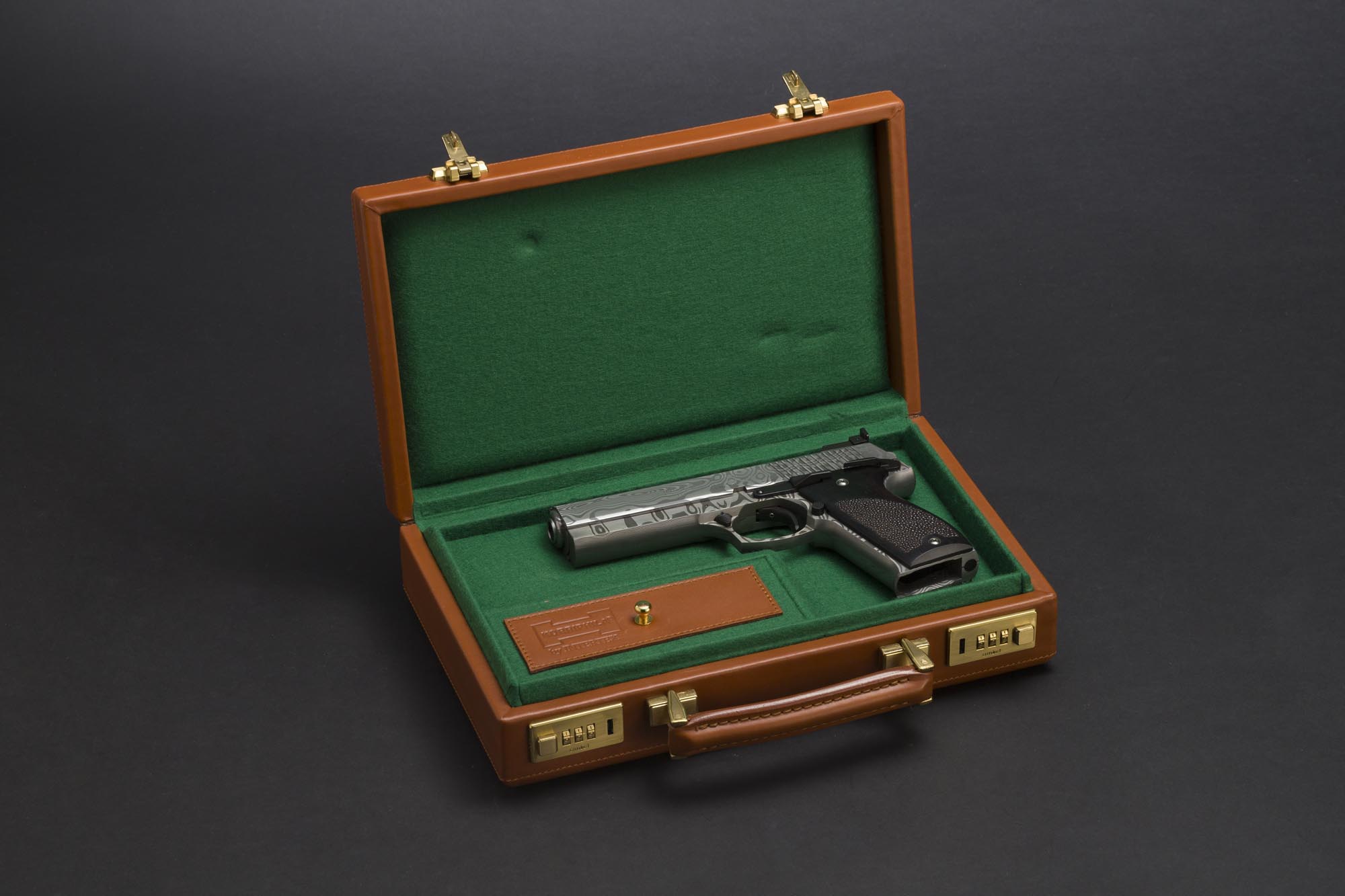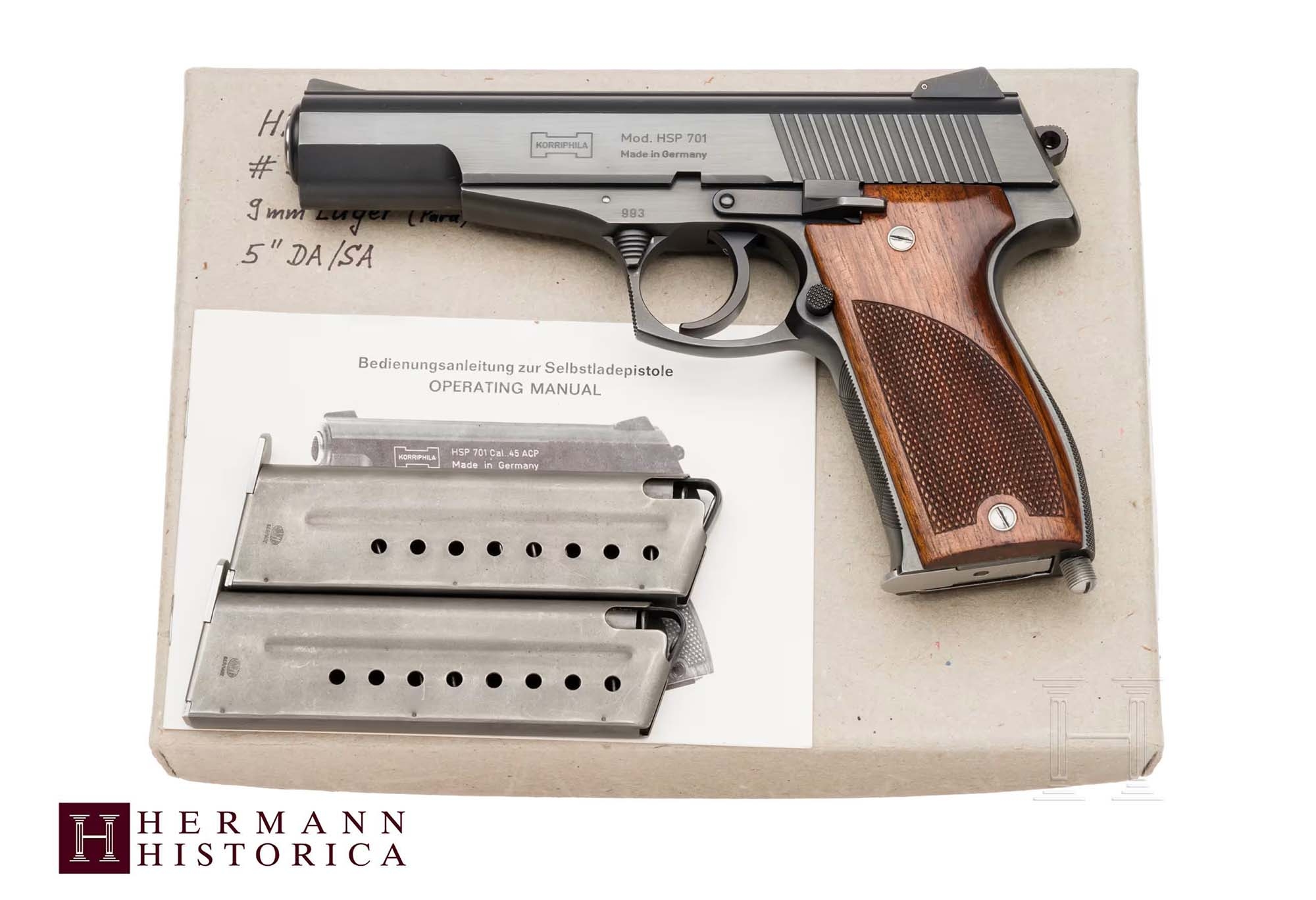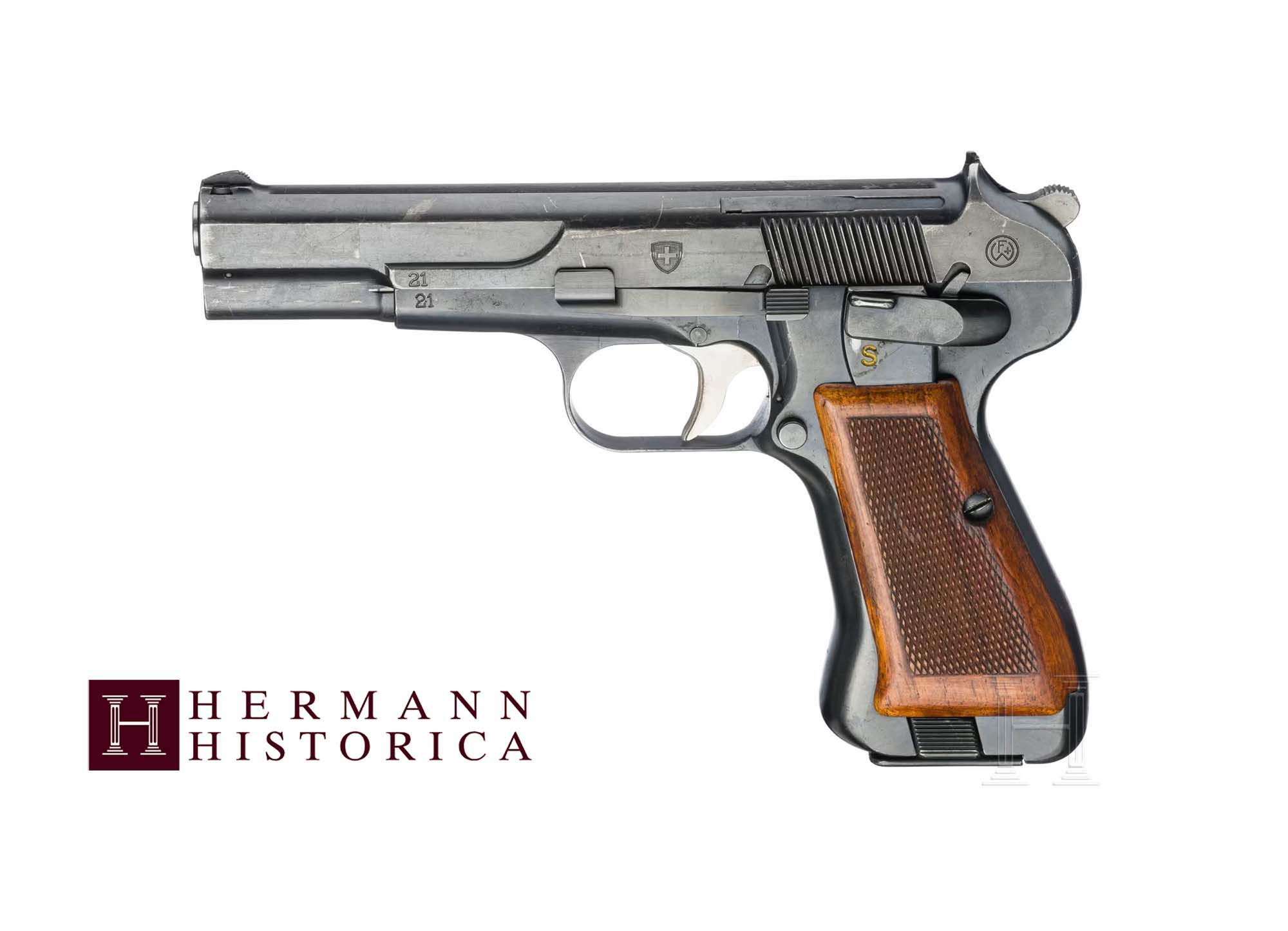The first scheduled auction is the one entitled "Arms & Armour, and Antique Firearms", it will take place on 4 November 2025 starting at 10.00 am and it delivers what it promises: we will only present two lots in this preview, but our invitation is obviously to go and browse through the magnificent online catalog and – why not – order the printed version, worthy of being in the library of every antique firearms enthusiast.
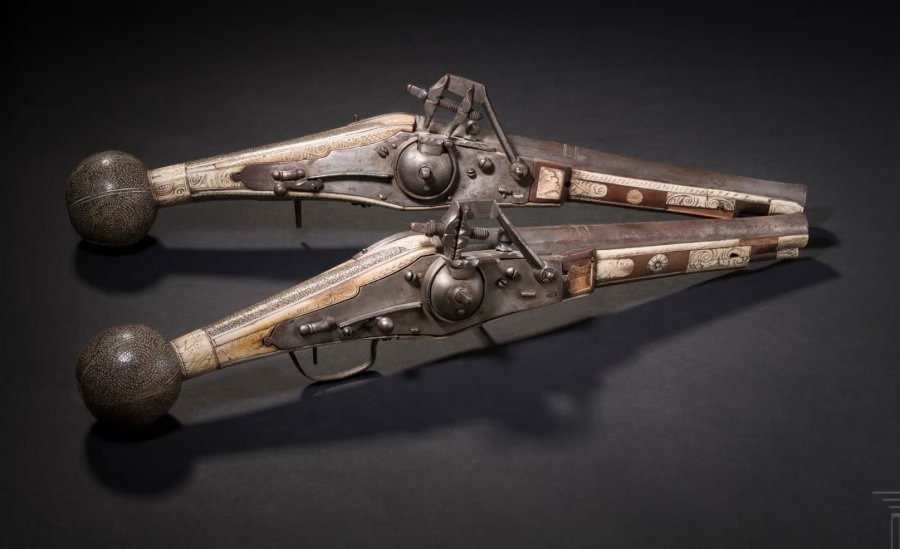
Let's begin with lot 1406, which is part of the auction dedicated to antique firearms: this is a magnificent pair of wheellock pistols (puffers) made in Suhl in the 1570s/80s with bone inlaid stocks. The octagonal, then round, smooth bore barrels are in 17.5mm caliber with slightly flared muzzles. The root of both barrels is engraved with the "EK" monogram. The locks have domed wheel covers and external safety levers. The hammers have internal springs. Iron trigger guard (one of the two is missing). The stock is walnut with elaborate inlays of engraved and blackened bone, the back of the grip and the spherical butt are entirely covered with fine spiral inlays composed of shavings and dots. Both pistols have a damaged forearm. Overall length is 58 centimeters. These are a rare example of high quality archaic pistols in good condition that can be improved with proper restoration. They come from the estate of a noble family in southern Germany. Starting price is set at € 18,000.

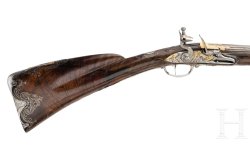
With lot 1421 we move to the French court of the mid-18th century. This is a flintlock shotgun made by Jean Baptiste Laroche, Arquebusier du Roi Louis XV, a distinguished example of a luxury firearm intended for the highest strata of nobility. The smooth bore is in 15.5 mm caliber. Barrel profile is octagonal and finely fluted at the breech, then round after a short golden decorative band.
The front sight is surrounded by finely engraved decorative tendrils inlaid in gold. The lock with delicately chased décor on a chiselled gold depicting the mythological blacksmith Vulcan and a seated boy. On the hammer is the figure of a heron and the gunsmith's signature (Laroche à Paris). The beautifully grained walnut stock is decorated with silver wire inlays. Furniture is iron, with three-dimensional, chiselled embellishment on a gold background. Overall length is 146.5 cm. Jean-Baptiste Laroche was active in Paris from 1740 to 1769 as a gunsmith and Arquebusier du Roi. In 1743 he was granted the royal "Brevet du Logement" in the Louvre, where he lived until his death. A pair of flintlock pistols he was commissioned to make for Louis XV are part of the collection of the Victoria & Albert Museum in London (accession number 2243 and A-1855). The starting price for this genuine museum piece is 18,000 euros.
The Historical and Modern Firearms auction on 5 November 2025
We now come to the auction that our readers are most excited about, namely Historical and Modern Firearms, which comprises 724 lots and will start on 5 November 2025 at 10 am. As always, our preview presents just a few of the hundreds of firearms that will be put up for auction, and to see them all you can sit back and log on to the dedicated site page.
Lot 2130 is a piece of extraordinary interest for collectors of archaic semi-automatic pistols. It is in fact a very rare Bergmann Model 1896 No. 3, Target model, with serial number 461 chambered in 6.5 Bergmann. The octagonal barrel is 185 millimeters long. This special model is fitted with adjustable front and rear sights and comes with trigger stop and set trigger. The Bergmann 1896 does not have a detachable magazine, but was loaded by filling the five-round magazine from the top using a stripper clip. The bluing on this specimen of which very little is known is 98%. Grips are made of finely checkered walnut wood. The gun is accompanied by a case, probably not original, containing a screwdriver and cleaning rod. The starting price for this archaic but refined pistol is 6,000 euros.
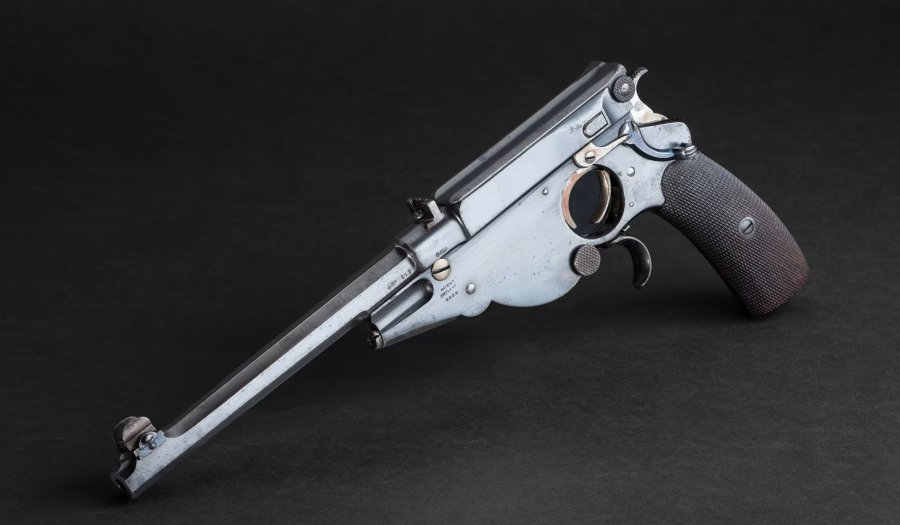
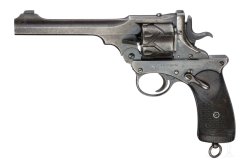
Lot 2472 is a great classic that cannot be missing from a top-notch revolver collection. It is in fact a rare .455 Webley Webley & Scott Fosbery 1902 automatic revolver with serial number 1566 and a 6-inch (152 mm) barrel. This is a pistol with a top-breaking, sliding frame in which the rotation of the cylinder was actuated by recoil. The barrel bears the inscription "Army & Navy C.S.L.", or Army & Navy Co-operative Society Ltd, a wholesaler that supplied mainly British army and navy officers. Although never officially adopted by the British Army, some examples of this revolver were purchased privately by officers who took them with them into action in the Boer Wars and the First World War. In total, around 5,000 examples were made between 1901 and 1924. The starting price is all in all reasonable: 3,800 euros.
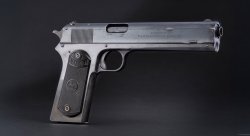
A good choice for those wishing to start collecting with a very interesting but affordable piece is lot 2573, a 1915 Colt Model 1902 military pistol chambered in .38 ACP, with a 150-mm barrel. It is a semi-automatic that was the progenitor of the legendary Colt 1911 and this particular example is in excellent condition despite having been manufactured 110 years ago. It has an 8-round single-stack magazine. The serial number is 37704 and on the left side of the frame are the internal acceptance marks VP and 1. On the left side of the slide is the inscription "Automatic Colt / Calibre 38 Rimless Smokeless". The grips are made of hard rubber, in perfect condition and bear the iconic "Rampant Colt" logo; at the bottom of the grip we find the lanyard ring, which confirms the military destination of this specimen. As was the custom at the time, sights are very spartan: a small, adjustable driftable rear notch and a half-moon fron sight. The starting price for this piece of American gun history starts at 2,000 euros.
Lot 2632 is a rare Mauser Tankgewehr M1918 anti-tank rifle in 13x92R caliber, with serial number 1290, matching numbers except for the bolt and rear sight (both numbered "607"). The barrel is 98-cm long, with slightly dull bore; there are slight signs of corrosion in the muzzle area. Wing safety not working. Tangent rear sight with U-notch, graduated 1-5, peaked front sight. The chamber area bears the Mauser crest above the date "1918" and has various imperial acceptance marks. Original barrel finish 90%, breech end rather rubbed, otherwise in good condition with some patina and staining. Good overall condition, which can be improved with proper cleaning. Original tube steel bipod with original finish, in good condition, no corrosion. Overall length 169 cm. The starting price is 10,500 euros.

Lot 2652 is a real curiosity, showing that gun designers left no avenue unexplored, particularly in times of war. It is an unmistakable cal.4 four-barrel flare pistol by Immanuel Meffert with serial number 1944.
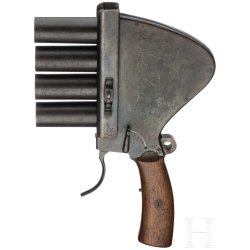
The trigger is double action only and each pull on the trigger activates the firing pin of the next barrel, from top to bottom. The mechanism still seems to function correctly. This is a flare pistol of great value and extreme rarity; it is believed that only 25 of the 2,500 pistols made towards the end of the First World War still exist today. Their production was entrusted to various manufacturers, but the initials I.M. stamped on the barrel confirm that this example was built by Immanuel Meffert in Suhl. This pistol is mentioned in Wolfgang Kern's book, Deutsche Leuchtund Signalpistolen, on page 147. The Meffert flare pistol retains about 97 per cent of its original finish and is fitted with walnut grips with matching serial numbers. The starting price of this curio is € 3,500.
We end the preview on a high note with a gun linked to facts and figures from Europe's recent stormy past, for which we take the liberty of a few more lines.
Lot 2680 is a Walther PP semi-automatic pistol in 7.65mm Browning, manufactured in Zella Mehlis and finely engraved, which belonged to Munich Police President August Schneidhuber, who was assassinated on 30 June 1934 during the infamous "Night of the Long Knives". The serial number is 812629. The slide is fully engraved and has a 90° safety. Bore is mirror-like. Its special feature is a thicker barrel muzzle, which is why the slide opening had to be enlarged (no other slide is compatible with this pistol). Bluing and foliage engravings are perfectly preserved, the grips are thick and heavy, with cast-in metal reinforcing plate, typical of that period.
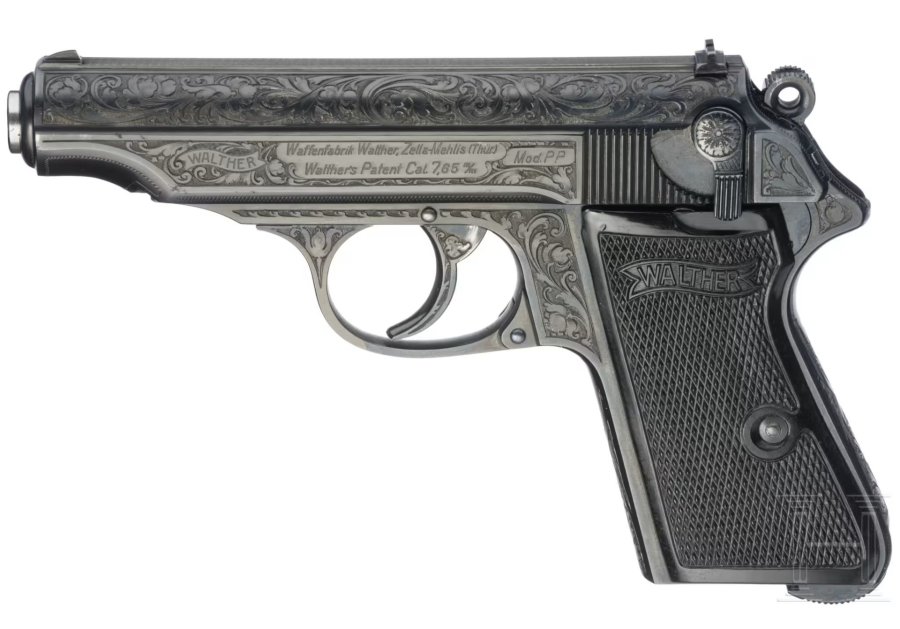
The pistol is accompanied by a green velvet-lined leather gift box with a dummy round and cleaning rod. The original cardboard box and two instruction manuals are also included. This pistol was presented on 31 December 2009 by Mrs Adelheid Held, née Schneidhuber, to Dr Koller, Munich's police chief from 1988 to 2003. Total production was about 1,800 pieces from 1933 to 1937. Very rare and in very good condition. Schneidhuber had held a leading position in the SA since 1929: from 8 February 1929 to 1 April 1931 he led the SA in Southern Germany (Bavaria, Württemberg, Baden and Tyrol) as Deputy Supreme SA Leader for the South. Appointed Police President in Munich in April 1933, he was one of the central figures in a rapidly changing city. With him, a man came to the top of the police force who had already attracted attention through his activities in the SA, but who was also considered a pragmatic official. The pistol now up for auction was part of this history – his personal service weapon. It is a rare, authentic relic of those years when political fronts shifted and the entire structure of state power was reorganised. Schneidhuber, born in Traunstein in 1887, served in the First World War before becoming an active supporter of the National Socialist movement in the Weimar Republic.
As a member of the SA, he rose rapidly through the ranks and his appointment as Police President marked not only the peak of his personal career, but also a turning point in Munich's police force. However, his tenure was short-lived. In June 1934, he was arrested in the wake of the so-called Röhm Affair and shot on 30 June in Munich-Stadelheim – not by foreign enemies, but by a political upheaval within his own camp. It was a fate shared by many high-ranking SA officials; this pistol is therefore much more than a technical object. It represents a phase in German history in which ideology, institutions and personal loyalties came into conflict. As the personal companion of a high-ranking official from that period, it is a silent witness to power, responsibility and an abrupt end. The lot, which also includes the letter of transfer to Dr Kolle, is for sale with a starting price of €5,000.
We conclude our preview here, reminding you that on November 12, 2025, auction number 107, “Historical and Modern Firearms,” will be held exclusively online, consisting of 1,024 lots evenly distributed among pistols, revolvers, rifles, and carbines. You can view the catalog online by following this link.
All that remains is to invite you to browse the catalogs of Hermann Historica's auctions 106 and 107 to discover all the gems they contain. Enjoy!
To find out more please visit the Hermann Historica website.


